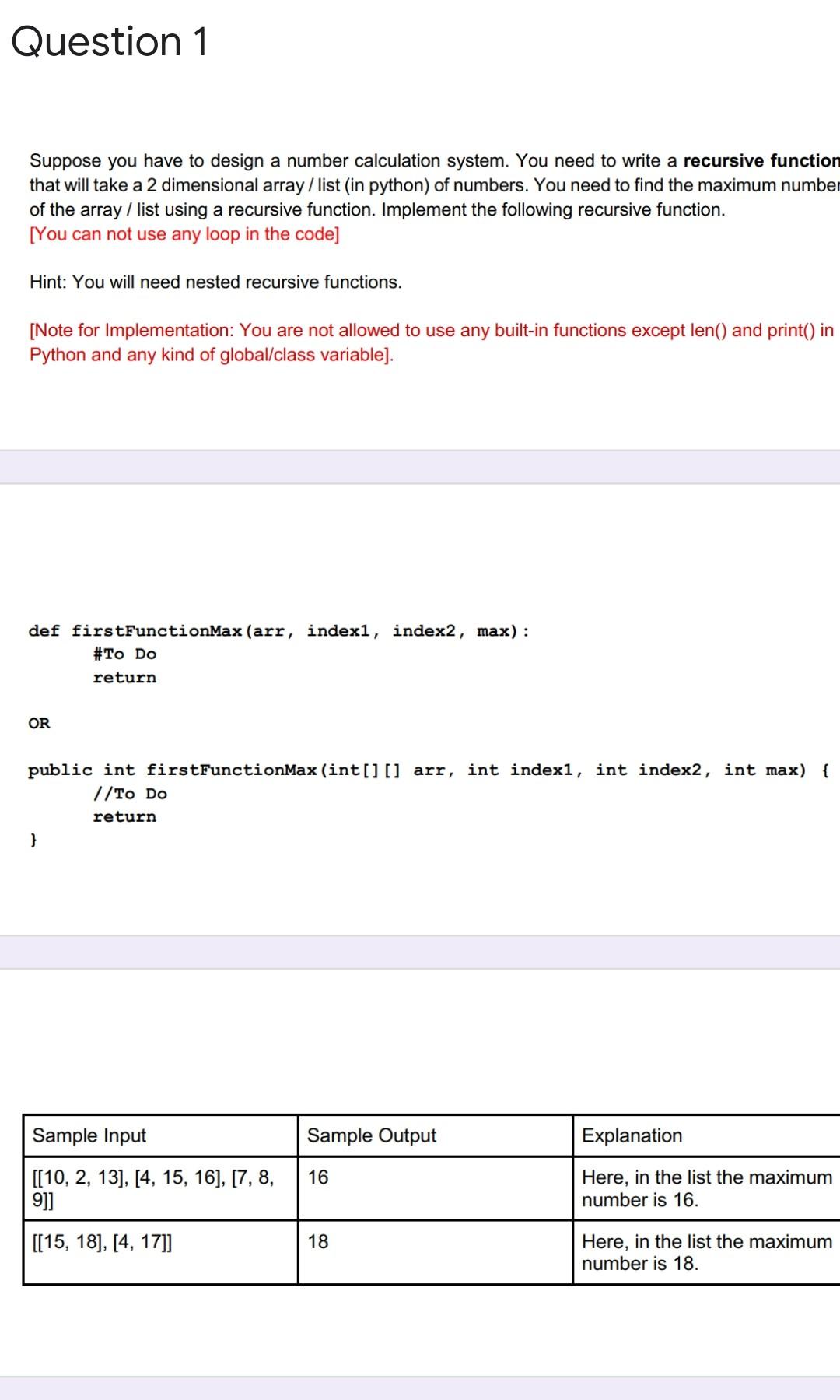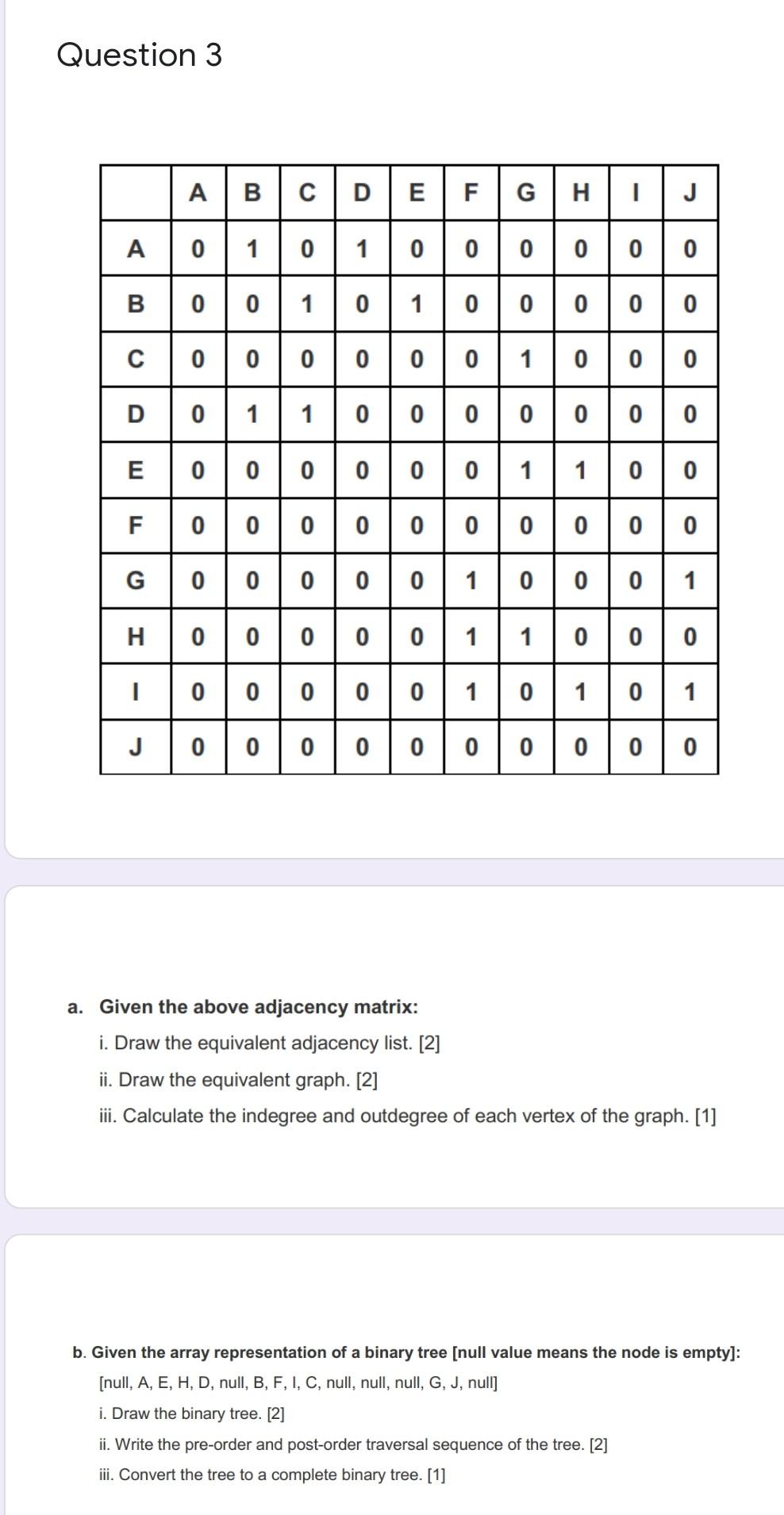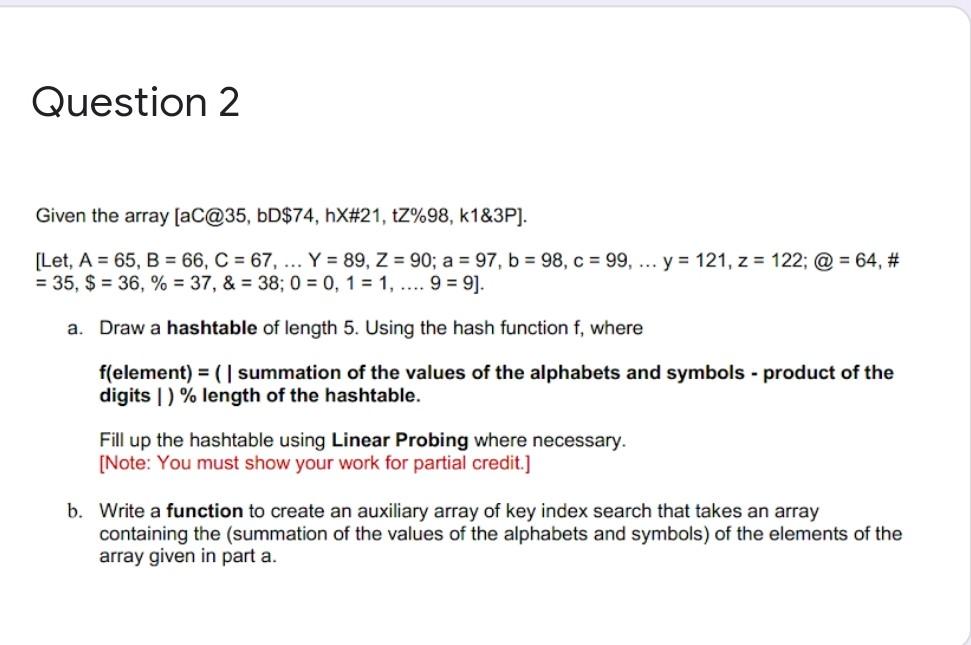Answered step by step
Verified Expert Solution
Question
1 Approved Answer
Sir, Please solve these questions asap Question 1 Suppose you have to design a number calculation system. You need to write a recursive function that



Sir, Please solve these questions asap
Question 1 Suppose you have to design a number calculation system. You need to write a recursive function that will take a 2 dimensional array/ list (in python) of numbers. You need to find the maximum number of the array / list using a recursive function. Implement the following recursive function. [You can not use any loop in the code] Hint: You will need nested recursive functions. [Note for Implementation: You are not allowed to use any built-in functions except len() and print() in Python and any kind of global/class variable). def firstFunctionMax (arr, indexl, index2, max): #To Do return OR public int firstFunctionMax (int[][] arr, int indexl, int index2, int max) { //To Do return } Sample Input Sample Output Explanation 16 [[10, 2, 13], [4, 15, 16], [7, 8, 9]] Here, in the list the maximum number is 16. [[15, 18], [4, 17]] 18 Here, in the list the maximum number is 18. Question 3 A B C D E TI G H I J 1 0 0 0 1 0 0 A 0 1 0 1 0 0 0 0 0 0 B 0 0 1 0 1 0 0 0 0 0 C 0 0 0 0 0 0 1 0 0 0 DO D 0 1 1 0 0 0 0 0 0 0 E 0 0 0 0 0 0 1 1 0 0 00 0 00 0 1 0 | | | | | | | | | | F F 0 0 0 0 0 G 0 0 0 0 G 0 0 0 0 0 1 0 0 0 1 H 0 0 0 0 0 1 1 0 0 0 1 0 0 0 0 0 1 0 1 0 1 H 00 00 0 1 J 0 00 0 O 0 O 0 0 O 0 0 0 a. Given the above adjacency matrix: i. Draw the equivalent adjacency list. [2] ii. Draw the equivalent graph. [2] iii. Calculate the indegree and outdegree of each vertex of the graph. [1] b. Given the array representation of a binary tree [null value means the node is empty]: [null, A, E, H, D, null, B, F, I, C, null, null, null, G, J, null] i. Draw the binary tree. [2] ii. Write the pre-order and post-order traversal sequence of the tree. [2] iii. Convert the tree to a complete binary tree. [1] Question 2 Given the array (aC@35, bD$74, hX#21, t7%98, k1&3P). [Let, A = 65, B = 66, C = 67, ... Y = 89, Z = 90; a = 97, b = 98, c = 99, ... y = 121, z = 122; @ = 64, # = 35, $ = 36, % = 37, & = 38; 0 = 0, 1 = 1, .... 9 = 9]. a. Draw a hashtable of length 5. Using the hash function f, where f(element) = (summation of the values of the alphabets and symbols - product of the digits % length of the hashtable. Fill up the hashtable using Linear Probing where necessary. [Note: You must show your work for partial credit.] b. Write a function to create an auxiliary array of key index search that takes an array containing the (summation of the values of the alphabets and symbols) of the elements of the array given in part aStep by Step Solution
There are 3 Steps involved in it
Step: 1

Get Instant Access to Expert-Tailored Solutions
See step-by-step solutions with expert insights and AI powered tools for academic success
Step: 2

Step: 3

Ace Your Homework with AI
Get the answers you need in no time with our AI-driven, step-by-step assistance
Get Started


